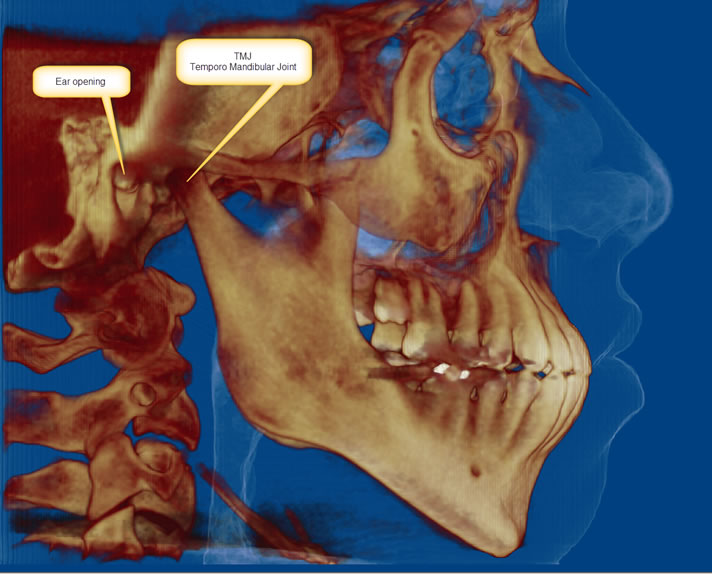Temporomandibular Joints
“TMJ” stands for temporomandibular joint or, the jaw joint. In fact, there are really two TMJ’s: one on each side of the mandible (lower jaw bone) that holds all the lower teeth. The TMJ is the joint formed by the temporal bone of the skull (temporo) and the lower jaw or mandible (mandibular). These joints move each time we chew, talk or swallow. They are located in front of the ears. Unlike the shoulders or knees which are ball-and-socket joints, the TMJ is a sliding joint. The sliding allows for pressure placed on the joint to be distributed throughout the joint and for greater range of mouth opening.
Adding to the joint’s complexity is that between the bones (condyle) that make up the TMJ (the temporo and mandibular) is a disc. This disc allows the sliding action and wide mouth opening to take place smoothly in healthy states. Made primarily of cartilage within the TMJ capsule, the disc acts like a third bone. The superior belly of the lateral pterygoid muscle attaches itself to the front part of this disc and moves the disc forward with certain movements of the TMJ.
In addition to this, the mandible (made of one piece of bone) is suspended in space by the two TMJs. Muscles and ligaments help to provide integrity and stability to the heavy daily actions of chewing, talking and swallowing.
Any injury to one side of the joint invariably affects the other in differing degrees – at times entirely opposite to where the injury first occurred.

